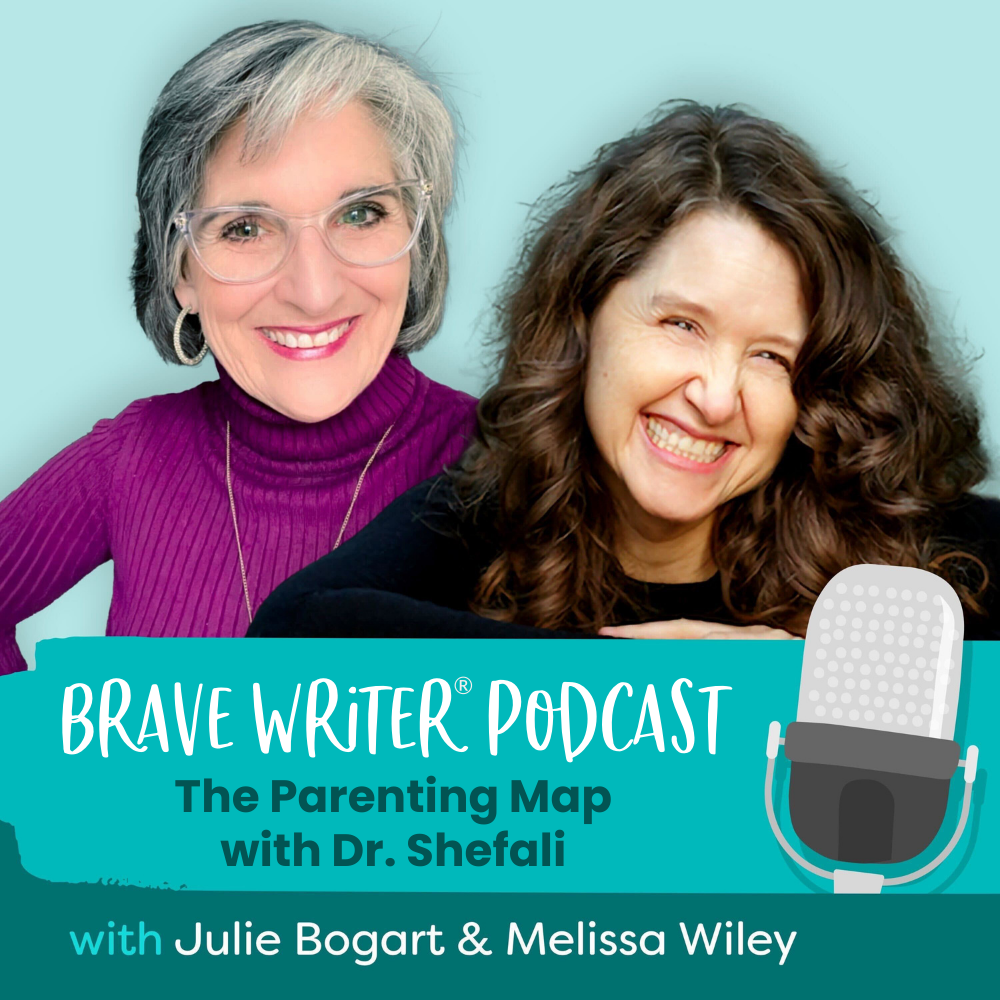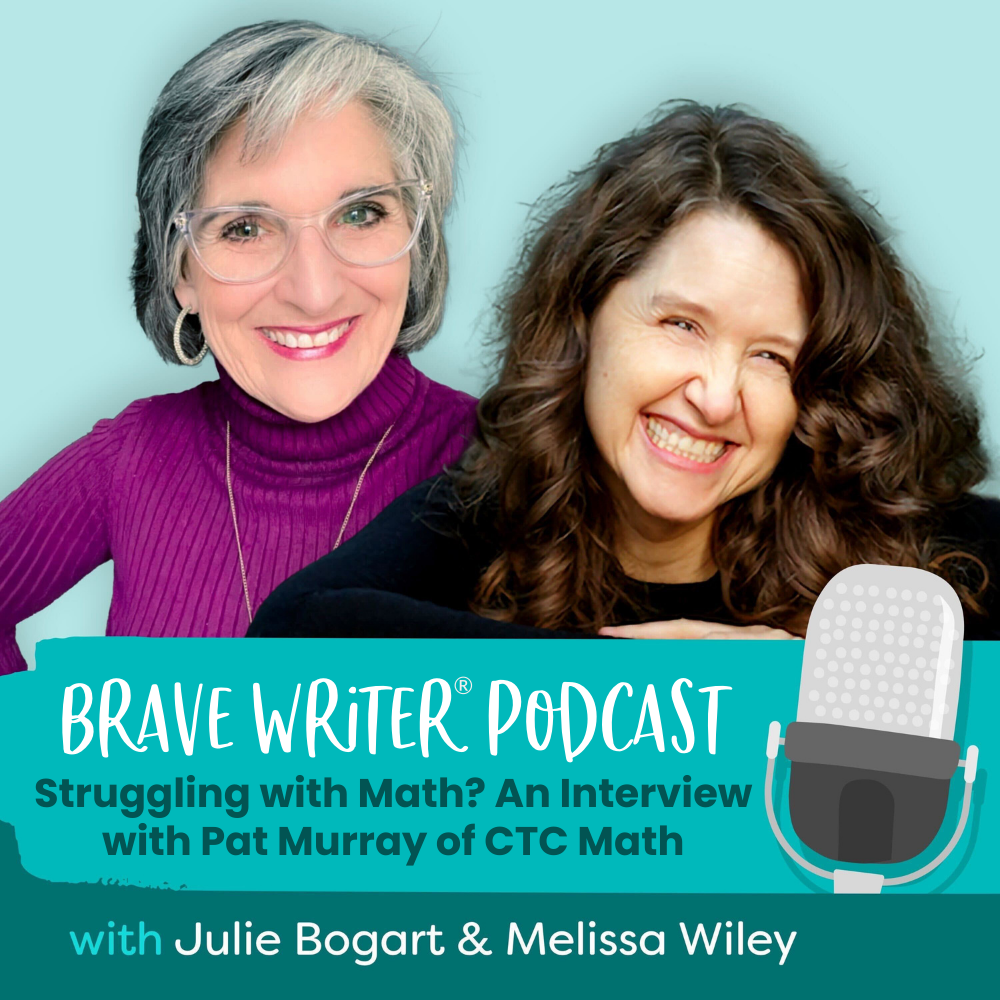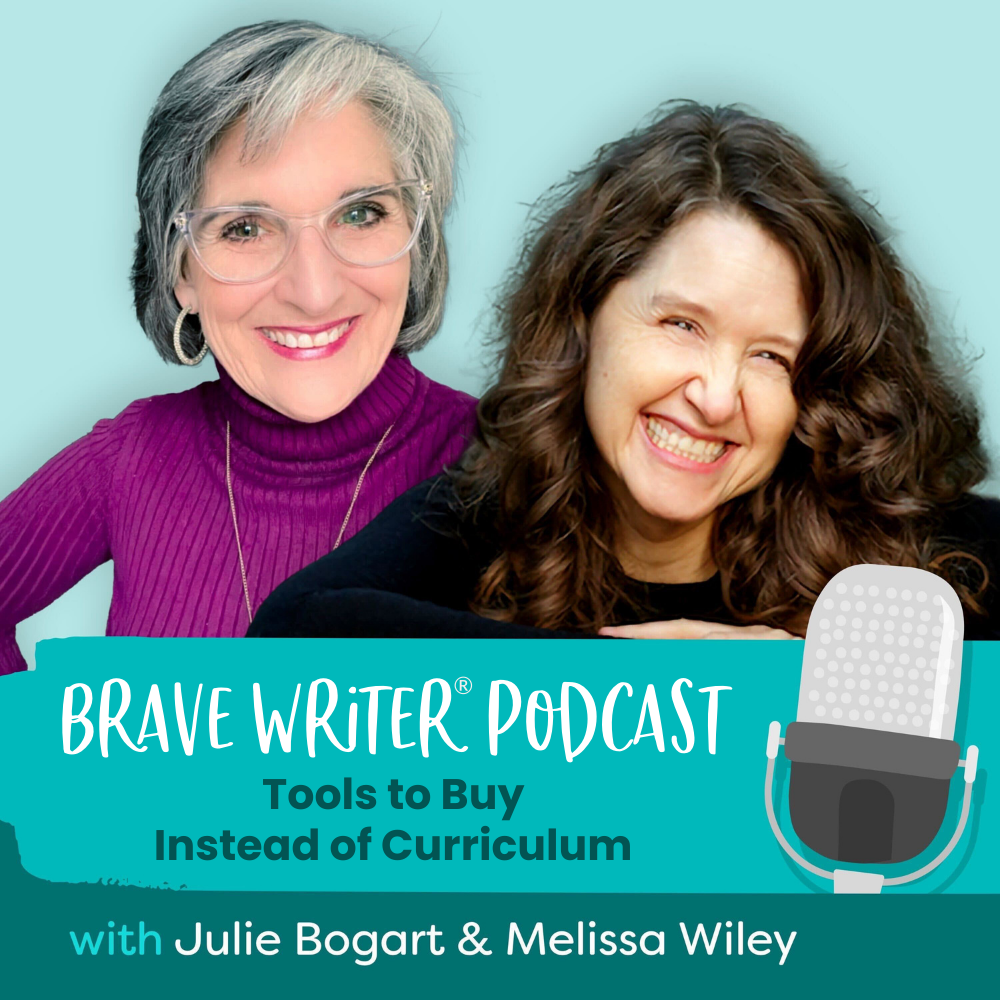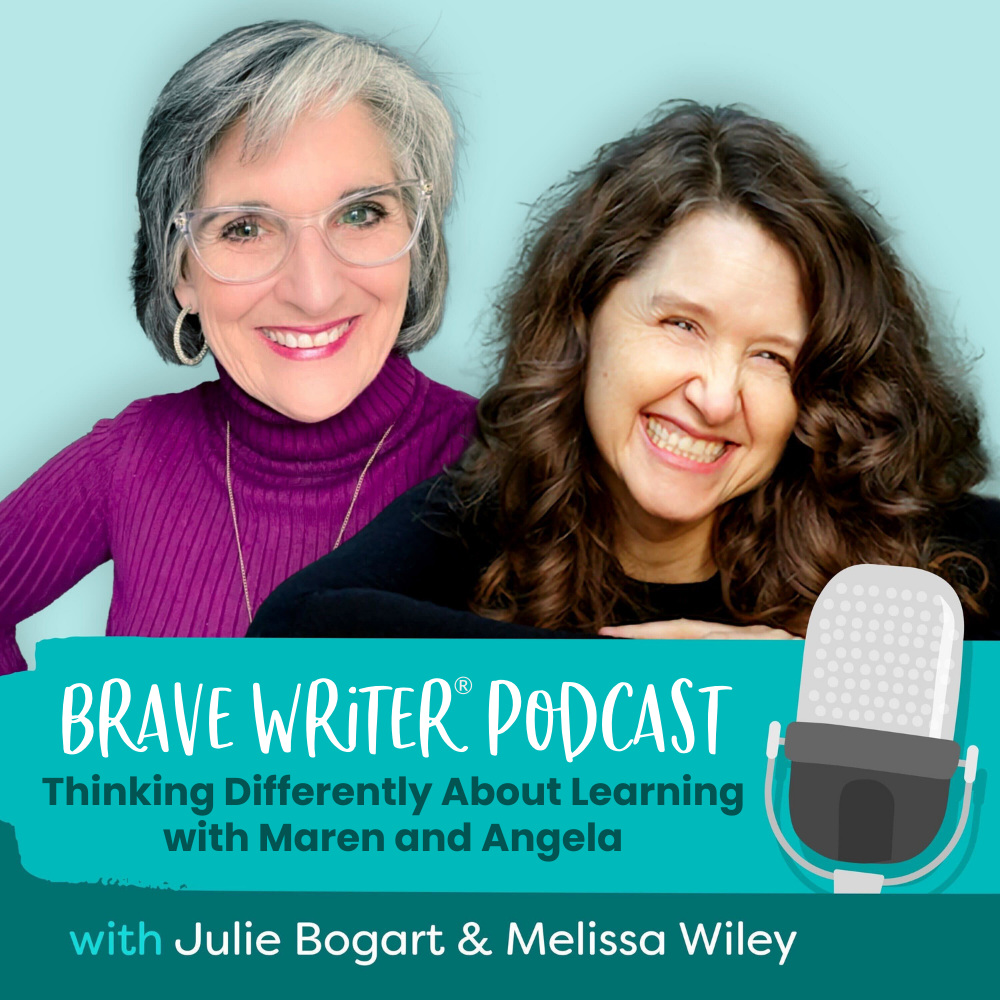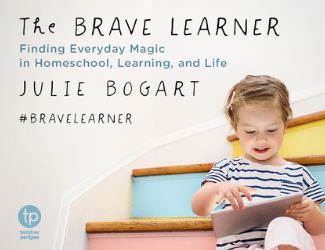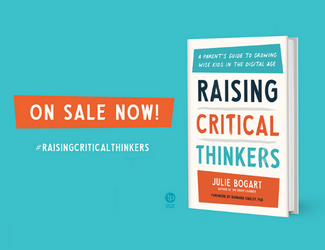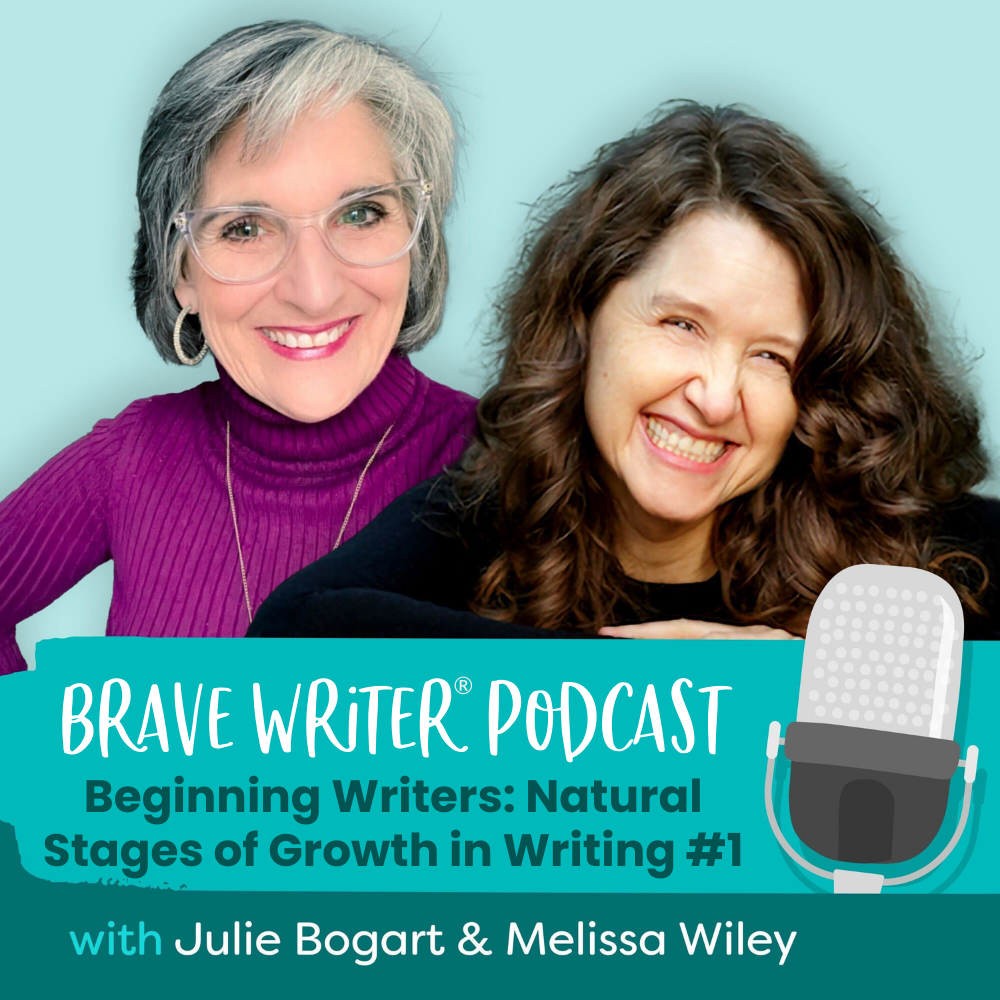
We’re re-recording our Natural Stages of Growth in Writing series! If you’re a longtime listener, you may remember our first series on the topic. It was made up of conversations between Julie and her son. Now we’re recording in an updated format with more lessons learned and observations gleaned over the years.
In this Brave Writer podcast episode, we cover the Beginning Writers stage, also known as the “Jot It Down” stage. This stage actually starts when your baby says their first word and you reflexively write it down. As they grow older and break out into passionate stories like toddlers do, jot down those stories right there in the moment. In this stage you’re teaching your child that writing is simply capturing thought in words that can be preserved for an interested audience.
Julie and Melissa share adorable anecdotes of when they did this with their own children, not only building a foundational concept of writing, but also preserving invaluable family moments.
Be sure to stick around for the end of the episode to learn about the Beginning Writers Bundle and the Quill & Jot It Down Bundle.
Show Notes
The “Jot It Down Stage”
This first writing stage actually starts when your baby says their first word and you reflexively write it down. Don’t stop there. As they grow older and break out into passionate stories like toddlers do, jot down those stories right there in the moment. This stage lasts until your child starts to pick up a pencil themselves… but of course you don’t ever have to stop writing down their cute moments!
The Foundation for Writing
The “Jot It Down” stage lays the foundation for your child’s writing for the rest of their lives. You’re:
- teaching your child that writing is simply capturing thought in words that can be preserved for an interested audience.
- showing them that what they think and express matters.
- transforming their thoughts and words into something they can physically hold and even play with.
For example, when Julie jotted down her four year old son’s Lego character stories on a clipboard, he then carried around the clipboard around him as he played Legos.
Family Archives
Not only does the Beginning Writers “Jot It Down” stage lay the conceptual foundation of writing for your kids, but it also acts as a family archive. Melissa’s young adults love to go back and look at what they said when they were little.
Resources
- Big juicy questions. Memories that last a lifetime. Meaningful ways to learn grammar, spelling, and punctuation. If this way of homeschooling speaks to you, check out our Brave Writer programs: Quill (ages 5-7), Dart (8-10), Arrow (11-12), Boomerang (13-14), Slingshot (15-18). On sale through the end of June. Sale includes a free lifetime membership to Brave Learner Home. Purchase by June 30 to take advantage of this deal!
- Check out the Brave Writer Beginning Writers Bundle, on sale through the end of June.
- Check out the Quill & Jot It Down Bundle, on sale through the end of June.
- Start a free trial of CTCmath.com to try the math program that’s sure to grab and keep your child’s attention!
- Sign up for our Text Message Pod Ring to get podcast updates and more!
- Send us podcast topic ideas by texting us: +1 (833) 947-3684.
Connect with Julie
- Instagram: @juliebravewriter
- Threads: @juliebravewriter
- Twitter: @bravewriter
- Facebook: facebook.com/bravewriter
Connect with Melissa
- Website: melissawiley.com
- Substack: melissawiley.substack.com
- Instagram: @melissawileybooks
- Twitter: @melissawiley
Produced by NOVA Media


